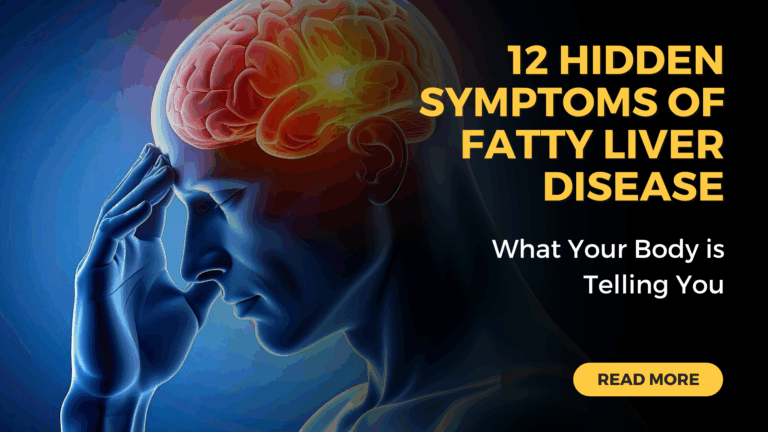The most effective approach to lose belly fat requires understanding what makes this health challenge so critical. Most people carry about 90% of their body fat as subcutaneous fat just beneath the skin, while the remaining 10% exists as visceral fat that creates serious health risks.
Visceral fat poses dangers far beyond appearance concerns. Women with larger waistlines face more than double the risk of developing heart disease. Each additional 2 inches of waist size increases cardiovascular disease risk by 10%. People with high visceral fat levels have three times the risk of developing precancerous polyps.
Current popular methods for losing belly fat often miss the science behind effective fat reduction. Research demonstrates that low-carb diets show particular effectiveness, with participants losing an average of 10 pounds more than those following low-fat approaches — 28.9 pounds versus 18.7 pounds.
This guide presents evidence-based strategies for targeting both subcutaneous and visceral belly fat through nutrition and exercise protocols. Lifestyle factors such as sleep quality significantly impact results, as studies show people sleeping fewer than 5 hours nightly face much higher likelihood of weight gain.
We focus on helping you achieve better health outcomes beyond aesthetic improvements. Our clinic provides innovative services designed to address stubborn belly fat when traditional methods haven’t delivered the results you need.
Table of Contents
Why Belly Fat Matters for Your Health
Understanding what makes belly fat dangerous becomes essential when exploring effective reduction strategies. This excess abdominal fat represents a serious health issue that extends far beyond cosmetic concerns.
The link between belly fat and chronic disease
Excess midsection fat substantially increases risk for multiple serious conditions. The health consequences extend beyond heart problems already established. People with high levels of visceral fat have three times the risk for developing dementia, including Alzheimer’s disease. Those with the most belly fat have triple the risk of developing precancerous polyps in their colons. Other conditions linked to excess belly fat include stroke, high blood pressure, and high cholesterol.
How visceral fat affects your organs
Subcutaneous fat differs significantly from visceral fat, which lies deep within your abdominal cavity surrounding vital organs including your stomach, liver, and intestines. Though representing only about 10% of total body fat, its location creates especially harmful effects.
Visceral fat functions as an active endocrine organ that secretes hormones and chemicals affecting your entire body. Too much visceral fat interferes with normal organ function, potentially leading to metabolic disease.
The role of inflammation and hormones
Visceral fat cells produce cytokines that trigger chronic, low-grade inflammation throughout your body. These inflammatory substances decrease insulin sensitivity, potentially leading to diabetes. Visceral fat creates precursors to angiotensin, a protein that constricts blood vessels and raises blood pressure.
Hormones play a crucial role in belly fat accumulation. High cortisol levels from chronic stress promote visceral fat storage. Hormonal changes such as menopause in women and declining testosterone in men contribute to increased abdominal fat.
These mechanisms explain why targeted approaches to lose belly fat are necessary for improving health outcomes. Our clinic offers specialized assessment and personalized plans to address this hidden health risk when you’re concerned about visceral fat accumulation.
What to Eat to Lose Belly Fat
Strategic food choices directly impact belly fat reduction. Certain foods promote visceral fat accumulation while others actively combat it.
High-protein and high-fiber foods
Protein serves as an essential component for weight loss success. People consuming higher protein amounts consistently show less abdominal fat compared to those following lower-protein approaches. Target protein sources include eggs (7g per large egg), skinless poultry (26g per 3oz chicken breast), fish, legumes (9g per ½ cup lentils), and Greek yogurt (20g per cup).
Soluble fiber provides significant benefits for belly fat reduction. Each 10-gram daily increase in soluble fiber intake corresponds to a 3.7% reduced risk of gaining belly fat. Effective high-fiber options include:
- Beans and lentils (7-9g fiber per ½ cup)
- Flaxseeds (10g fiber per 2 tablespoons)
- Berries (6-8g fiber per cup of raspberries/blackberries)
- Avocados (5g fiber per half)
- Cruciferous vegetables like broccoli and Brussels sprouts
Avoiding added sugars and trans fats
Certain foods directly promote belly fat storage. Trans fats found in baked goods, processed foods, and fried items increase visceral fat storage. Refined sugars and high-fructose corn syrup reduce satiety while increasing appetite.
Eliminate soda, candy, processed foods, and products containing partially hydrogenated oils.
The benefits of whole grains and healthy fats
Whole grains contain the complete grain kernel—bran, endosperm, and germ—providing fiber, vitamins, and minerals. People with highest whole grain consumption show 17% less likelihood of excess abdominal fat compared to refined grain consumers.
Focus on unsaturated fats from extra virgin olive oil, nuts, avocados, and omega-3 rich fatty fish. These fats support proper hormone function and reduce inflammation that contributes to belly fat.
Our clinic provides specialized nutritional counseling to develop personalized eating plans based on your unique body composition and health objectives.

How to Burn Belly Fat Through Movement
Movement provides one of the most powerful tools for targeting stubborn belly fat. The right exercise approach accelerates fat loss while supporting your overall health and wellbeing.
Aerobic exercise and fat metabolism
Aerobic activities directly enhance your body’s fat-burning capacity. Research demonstrates that 30 minutes of daily moderate exercise effectively reduces abdominal fat. Walking, running, swimming, and cycling create the necessary calorie deficit for weight loss. High-intensity interval training (HIIT) offers particular advantages—alternating between intense bursts and recovery periods burns up to 30% more calories than steady-state exercise within the same timeframe.
Strength training to build lean muscle
Resistance training delivers unique metabolic benefits beyond aerobic exercise. Strength training preserves and builds muscle mass, which elevates your resting metabolic rate. Muscle tissue burns more calories than fat tissue even during rest periods. Studies confirm that combining resistance training with aerobic exercise produces optimal outcomes—strength work builds lean mass while cardio reduces total body fat.
Daily habits that increase activity
Your everyday movements contribute significantly to fat loss success. Non-Exercise Activity Thermogenesis (NEAT)—energy expended during regular activities—accounts for more daily calorie burn than formal exercise sessions. Simple choices like standing instead of sitting can burn up to 100 additional calories daily. Taking stairs, parking farther away, and completing household tasks all increase your overall energy expenditure.
The most effective strategy combines all three movement approaches. Our clinic offers customized exercise plans designed to help you target belly fat through scientifically-backed movement protocols tailored to your specific needs.
Concerned About Your Belly Fat?
Call Verity Health’s Vancouver clinic today to schedule your
assessment and explore personalized treatment options for a healthier life!
Lifestyle Habits That Make a Difference
Daily habits beyond nutrition and exercise play a critical role in belly fat reduction. These lifestyle adjustments create measurable improvements for your waistline and overall health.
Sleep and belly fat connection
Quality sleep serves as a foundation for belly fat reduction. Mayo Clinic research demonstrates that insufficient sleep leads to a 9% increase in total abdominal fat and an 11% increase in visceral fat. Sleep deprivation increases calorie consumption while redirecting fat storage to the dangerous visceral compartment. People sleeping fewer than 5 hours nightly face substantially higher likelihood of weight gain.
Managing stress and cortisol levels
Chronic stress elevates cortisol production, which promotes abdominal fat storage. Stress often triggers emotional overeating patterns focused on high-fat, high-sugar foods. Effective stress management techniques include deep breathing, meditation, and progressive muscle relaxation that activate your body’s “rest and digest” system.
Cutting back on alcohol and sugary drinks
Alcohol consumption creates significant risk for excess waist fat accumulation. Even moderate drinking patterns correlate with enlarged visceral fat areas. Sugary beverages represent the primary source of added sugars in American diets, contributing directly to obesity and related health problems.
Tracking progress beyond the scale
Focus on multiple progress indicators rather than weight alone:
- Changes in clothing fit
- Waist and hip measurements
- Health markers including blood pressure and cholesterol levels
Our clinic provides specialized visceral fat assessment and personalized plans that address these lifestyle factors effectively.

Our Weight Loss Programs to Target Your Belly Fat
Medically Supervised Weight Loss Program Services
Our Weight Loss Medical program integrates proven medical interventions with comprehensive support to help you achieve significant and lasting weight loss. We focus on a holistic approach that considers your overall health and well-being. Embark on a supported path to weight loss with our medically supervised program, leveraging advanced treatments like GLP-1 receptor agonists, coupled with comprehensive care.
Body Contouring with Non-Invasive Body Shaping
Transform your body and redefine your silhouette with our advanced, non-invasive body contouring services. We use state-of-the-art UltraSlim Red Light Therapy, a gentle and powerful treatment that leverages cutting-edge light technology for effective fat reduction. Your journey to a new you will take place in our luxurious med-spa environment, where comfort and serenity are paramount. We believe in a personalized approach, which is why we create custom treatment plans specifically tailored to your unique body and aesthetic goals. Best of all, our treatments require no downtime, allowing you to seamlessly get back to your daily routine feeling confident and rejuvenated.

Effective belly fat reduction demands a targeted approach that addresses the unique challenges of both subcutaneous and visceral fat accumulation. The evidence demonstrates clear connections between excess abdominal fat and serious health conditions including heart disease, diabetes, and certain cancers. This makes belly fat reduction a critical health priority rather than solely an aesthetic goal.
Successful results emerge from combining strategic nutrition choices, appropriate exercise protocols, and essential lifestyle modifications. The research supports specific approaches that work better than others, particularly when addressing the dangerous visceral fat that poses the greatest health risks.
Progress measurement should extend beyond traditional weight tracking. Changes in clothing fit, waist measurements, and health markers like blood pressure and cholesterol levels provide more meaningful indicators of your health improvement journey.
Our clinic understands the challenges many people face with stubborn belly fat despite consistent efforts. We offer specialized visceral fat assessments along with innovative services including FibroScan for liver care, GLP-1 for weight management, and Ultraslim for body contouring. Our approach focuses on personalized solutions based on sound medical science to help you achieve better health outcomes.
FAQs
Q1. What are the most effective exercises for burning belly fat? A combination of aerobic exercise and strength training is most effective. High-intensity interval training (HIIT) can burn up to 30% more calories than steady-state exercise, while resistance training builds lean muscle mass, increasing your resting metabolic rate. Aim for at least 30 minutes of moderate exercise daily, incorporating both cardio and strength training for optimal results.
Q2. How does diet impact belly fat loss? Diet plays a crucial role in reducing belly fat. Focus on high-protein and high-fiber foods, which increase satiety and help preserve muscle mass. Avoid added sugars and trans fats, which promote visceral fat storage. Include whole grains and healthy fats from sources like olive oil, nuts, and fatty fish. These dietary changes can significantly impact your body’s ability to burn belly fat.
Q3. Can lifestyle changes help reduce belly fat? Absolutely. Quality sleep is essential, as lack of sleep can increase abdominal fat. Managing stress is crucial because high cortisol levels promote visceral fat storage. Limiting alcohol consumption and sugary drinks can also make a significant difference. Additionally, increasing daily non-exercise activity, like taking stairs or standing more, contributes to overall calorie burn.
Q4. How long does it typically take to see results when trying to lose belly fat? Results vary depending on individual factors, but with consistent effort, you may start noticing changes in 4-8 weeks. However, it’s important to track progress beyond just weight. Pay attention to changes in how your clothes fit, reductions in waist measurements, and improvements in health markers like blood pressure and cholesterol levels for a more comprehensive view of your progress.
Q5. Is spot reduction of belly fat possible? Spot reduction, or losing fat from a specific area through targeted exercises, is largely a myth. While exercises like crunches can strengthen abdominal muscles, they don’t specifically burn belly fat. To lose belly fat, you need to reduce overall body fat through a combination of proper nutrition, regular exercise, and healthy lifestyle habits that create a calorie deficit and improve your body’s fat-burning capabilities.




